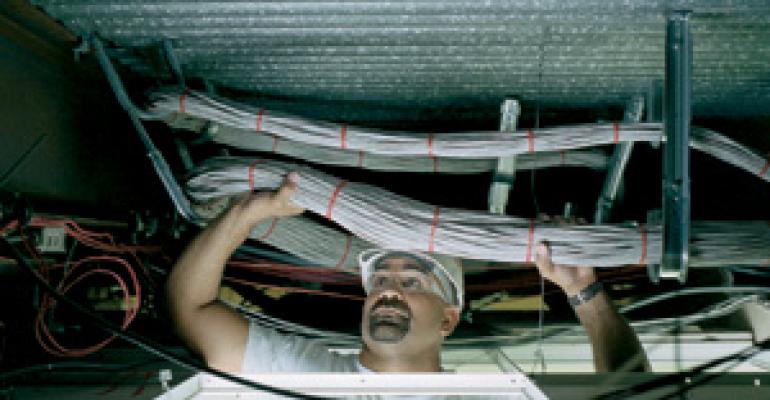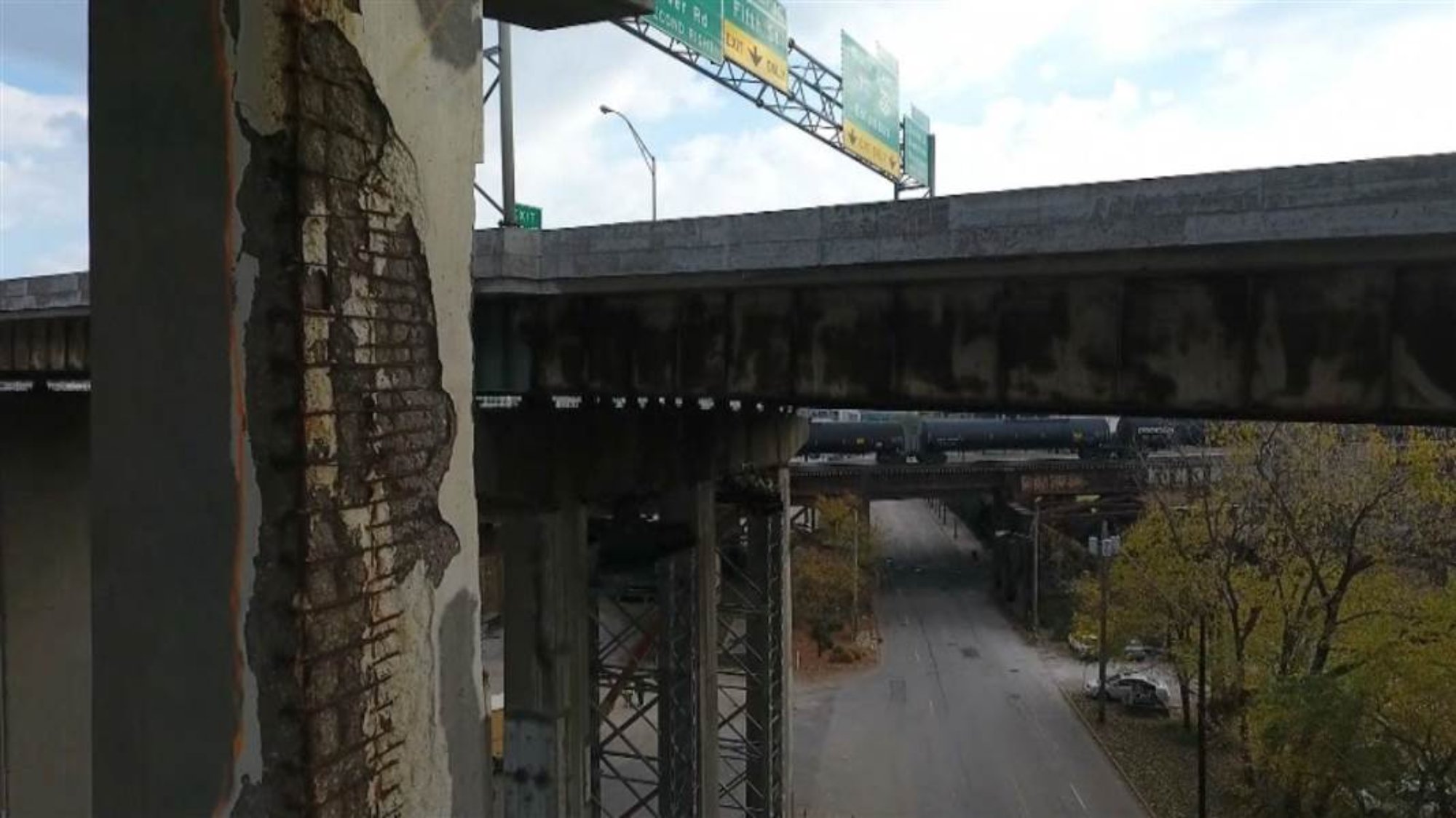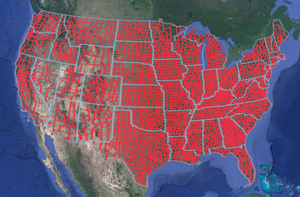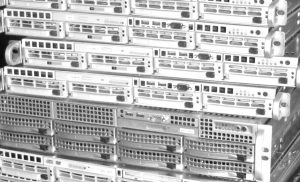The rules may be set at the state level, but the local voter registration information and vote counts roll up to the state level. They are initiated and gathered at the local level… the municipal level.
States are heavily involved but voting begins and ends at the local municipality, and the final tallies are reported to the State. The IT staff at those 3,100+ municipalities are responsible for the voting machines, the printouts used at the polling centers, and the collection and counting of the local votes.
And herein lies the unstated problem. I’d venture to say that most of those 3,100 municipalities are vulnerable to being breached. The severity may vary, but the likelihood is high that breaches have already occurred. I have some significant experience building and securing IT infrastructures from the growing and ongoing range of attacks and attempted attacks, as well as firsthand experience scanning for holes in private IT infrastructure here in the US. The frequency and breadth of these attacks has grown remarkably in just the last few years. Attempts to access and breach private networks has gone from being relatively rare to occurring several times a day and in some cases several time an hour.
This is the hidden infrastructure problem of Our Age. Just considering the depth and breadth of responsibilities our municipalities have, it is easy to quickly imagine several possible disruptive and disastrous results from a breach.
Consider the Federal breach reported last year:
July 9th, 2015: OPM government data breach impacted 21.5 million.
Government investigators now report that the data theft from the Office of Personnel Management compromised sensitive personal information, including Social Security numbers, of roughly 21.5 million people from both inside and outside the government.
I was one of those individuals and received a letter from the OPM informing me of the breach. In the letter they suggest, I do things like a credit check to determine if others were using my information.
In an article from Dark Reading earlier this year, they reported some telling figures about Federal Agencies and Data Breaches.
Dark Reading, March 28th 2016: Most Federal Agencies Have Suffered A Data Breach
- More than 60% of Federal agencies have suffered a data breach, and nearly 20% have experienced a breach in the last year.
- 90% of Federal government organizations feel vulnerable to data threats, and many are planning to increase security spending this year.
And then there are denial-of-service (DOS) attacks and distributed denial-of-service (DDOS) attacks. They can be used to take down servers or services as well as be used to break-in.
These types of attacks have been around from the beginning of the Internet but the breath and harm caused has grown enormously. Just this October 21st, 2016 there was an unprecedented distributed denial-of-service attack on the US and many popular websites were temporally taking down; websites including Twitter, Netflix Github, Vox, Spotify, Airbnb, and Reddit. As reported by many news organizations including The Wall Street Journal “Cyberattack Knocks Out Access to Websites”.
Now consider this on the municipal level, and think past your ID and identity theft.
What if someone wanted to cause some harm or confusion? They could potentially do things such as make slight alterations to the property tax databases. Perhaps they could do something more disruptive, such as altering the owners’ names or street names of a small percentage (5-10%) of the properties. That would be a minor disaster for any municipality. One could decrease the tax amount for similar numbers of properties, thus reducing the taxes collected that year. Consider the consequences such an event would cause. What if a small percentage (8%) of court records were deleted, slowly, only a few at a time over several weeks? It would be nearly impossible to detect in time to stop and peoples’ lives would hang in the balance.
Now, let’s considering voting. The problem here has been hinted at in the press, but it has not been explored much or clearly stated. There are many ways to disrupt voting and though some of the voting machines may have vulnerabilities, hacking significant numbers of them is simply impractical.
Instead, let’s consider attacks on the underlying systems.

Examples: 1) What if a varying degree of voters with known party affiliation were selected from the voter databases? Imagine the names of 7-12% of voters in various districts were mixed at random. When they arrived at the polls to vote, their name would not match what was shown at the polling place. It would cause delays and frustration, and the lines would back up as they and the poll workers tried to figure the issue out. In the end, they typically would be asked to fill out a provisional ballot. This would function as a very effective voter suppression technique. Eliminating such a percentage of either party’s voters would work to ensure the other party wins. 2) Or perhaps the vote tallies could be attacked, making very slight and random changes in favor of one party over the other as the votes came into the databases. The change would not have to be large at all and could go unnoticed. Similar to what occasionally happens in developing countries, the exit polls would be slightly off from the actual count. Some would argue, but the evidence is circumstantial and any case would be difficult to prove.
These examples consider the general case and the fact that the hack went unnoticed. But as I have said, there are over 3,100 municipalities. Though they could be individually hacked, it would be difficult to orchestrate such a hack on a scale that could affect them all in such a short period of time. They could do this over a period of weeks or even months but the likelihood of being noticed increases with time. Rather than attempt this, the hackers could focus on a few battleground locations and specific counties where their efforts would make the most impact.
What happens if we discover the breach either afterward or while it was occurring? I have been on systems while an outside hacker was also on and attempting to do harm. We could see one another and each would fight for control and attempt to lock the other out. These sorts of battles are happening every day now, and few people hear about them or care to understand the circumstances involved. These are real newsworthy fights, but few private organizations would care to disclose to the World that such a battle happened on their servers, and even fewer municipalities would want to report this if it occurred to them.
So in this instance, let’s say we discovered the breach. We would likely know or be able to figure out what the attack profile looked like, and would try to figure out what other sites were also breached. But we may never really know the full extent of the breach for sure. And regardless of what was understood on the technological level, the public trust may be lost. There could be some counties that were not part of the hack that would question their voter results. It would be a difficult mess to clean up, and depending on how things were handled it could be the cause for lasting, damaging effects to our nation.
Incidents like these have been cause for Civil War in many Countries. If this happened in the US, it may not lead to an internal war or civil unrest, though some are clearly seeking that, but it could be the cause of instability within our Country. Such instability would work to remove the US from the World stage and leave an open field for others. Depending on the severity, it could cause titanic negative effects to the stock markets worldwide. People and other countries invest in the US because of it’s stability; take that stability away and global financial chaos would result. Our Nation leads the World. In many countries they say that if the US gets a cold, they get pneumonia. If such instability happened within the US, the rest of the World would get much more than pneumonia.
What can we do about this?
Our government is not completely unaware of these vulnerabilities, but technical and complex problems are unpopular topics that rarely get addressed by politicians. So predictability, as with most issues these days, dealing these IT vulnerabilities has become politicized.
In an effort to alleviate these issues, Congress has passed two Acts. The Election Integrity Act of 2015 that defines and limits the electronic voting equipment states acquire. And the Election Infrastructure and Security Promotion Act of 2016 that defines voting technology as a critical infrastructure similar to power or water.
A good article that discusses this can be found in Wired Magazine, September 21st, 2016. Titled: Officials Are Scrambling to Protect the Election From Hackers This is a Federal effort lead by the Department of Homeland Security. Along with shoring up obvious holes perhaps they may deploy more advanced network monitoring tools such as one they refer to as Einstein.
Unfortunately, this effort has become derailed by politics with some state officials declaring that it is not help, but rather a Federal power grab. As discussed by Eric Geller in his Politico article on August 28th, 2016 titled: Elections security: Federal help or power grab?
While the two new Acts are a start they do little to solve the problem. The fact remains that all of these efforts begin at the state level as they likely should, but in reality the state is far removed from where the problems actually exist. As a result, the issues continue widely unaddressed.
It’s pretty clear that this, largely unacknowledged, IT Infrastructure Risk is one of the most volatile issues facing our Nation and its continued stability. I say this due to the very low level of effort required to cause a very widespread high degree of harm. The ability to continue to enjoy security through obscurity is quickly evaporating. As the interest and abilities in technology hacking continues to increase, this issue is only exasperated. Until something is done to solve these problems and a new approach is taken, our future will remain at risk. The longer we delay, the more we guarantee highly damaging breaches.
My suggestion would run along the lines of creating National standards for the services municipalities deliver. And provide strong financial and technical support to help ensure they meet the standards. There should also be clear and enforceable repercussions should they fail to meet standards; these need to ensure, regardless of the circumstances, that the work gets done properly and the citizens are not left at risk.
Perhaps this could be something similar to the Internet Engineering Task Force (IETF) but for municipal IT combined with how we build and maintain freeways using federal funding as part of the financial resources to do the work. This Municipal Internet Task Force could be organized and lead by municipalities and help all municipalities Nationally share their experiences, knowledge base and establish best practices. Municipal IT should remain locally run and outsourcing its functions would be a big mistake. The local IT personnel are committed to their individual communities and are best suited to serve them.
Summary
I felt called to write this paper and alert people to this problem. Given my unique knowledge and understanding of the multifaceted elements involved, I see this as simply my civic responsibility. I tried to put things in terms most Americans will understand and worked to leave out all of the relevant but confusing technical jargon. In doing so I am also reminded of the quote “All tyranny needs to gain a foothold is for people of good conscience to remain silent. – Edmund Burke”.
This paper is meant to alert the public and not to suggest a precise course of action. We just need to get behind our municipalities and help ensure their success. Let’s get a conversation started. The best thing that you can do is to reach out to your local municipal leaders and express your concerns. They work for you, they provide the services you depend upon and pay for. It is your money they are working with and our country hangs in the balance.






